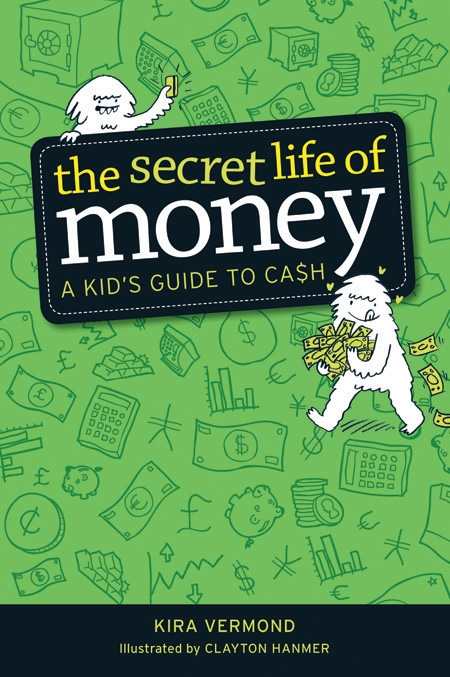The Secret Life of Money
A Kid's Guide to Ca$h
Kira Vermond wrote this book to give children basic financial literacy; but for the word kid‘s in the title, it would be an ideal go-to for most of their parents as well. In few pages, she manages to introduce concepts as diverse as the recent housing bust, the current recession, microlending, entrepreneurship, and the nuts and bolts of saving, credit, and investing. And that’s for starters! The book jumps around a bit from topic to topic, but each is given a thoughtful and thorough introduction with solid examples to back it up, occasionally in comic-strip form. Vermond cites studies that use neuropsychology and behaviorism to assess patterns of spending and saving, but she improves upon most “adult” nonfiction that uses the same data by pointing out that such patterns don’t doom anyone to a particular outcome. In fact, according to her fundamental message, financial education is the key to creating one’s own destiny.
Because the book is written in such a friendly, first-person voice, Vermond is able to painlessly instill some critical thinking skills simply by explaining her own response to some of the information presented. After breaking down a study by a British think tank that assigned values to various professions based on what they contribute to or take away from society, she comments that the economists “sure made me think. But like everything attached to economics, the buck doesn’t end here.” She goes on to give solid examples to counter the think tank’s theories. At a time when opinions on any subject seem limited to stark black and white, this willingness to see both sides in the interest of understanding is more than a little refreshing.
That’s not to say Vermond is lacking in opinions. She encourages hard work and saving money, charitable giving (with some useful caveats), attention to the global impact of items bought locally, and the word “broke” over “poor.” Clayton Hanmer’s illustrations dot nearly every page, showing the places donated clothes end up, or the concept of “poverty” as angry possessions with high price tags (one reading “way too much”) while people stand by counting their change. The Secret Life of Money may be a kid’s guide, but five will get you ten we could all learn a thing or two here.
Reviewed by
Heather Seggel
Disclosure: This article is not an endorsement, but a review. The publisher of this book provided free copies of the book to have their book reviewed by a professional reviewer. No fee was paid by the publisher for this review. Foreword Reviews only recommends books that we love. Foreword Magazine, Inc. is disclosing this in accordance with the Federal Trade Commission’s 16 CFR, Part 255.

